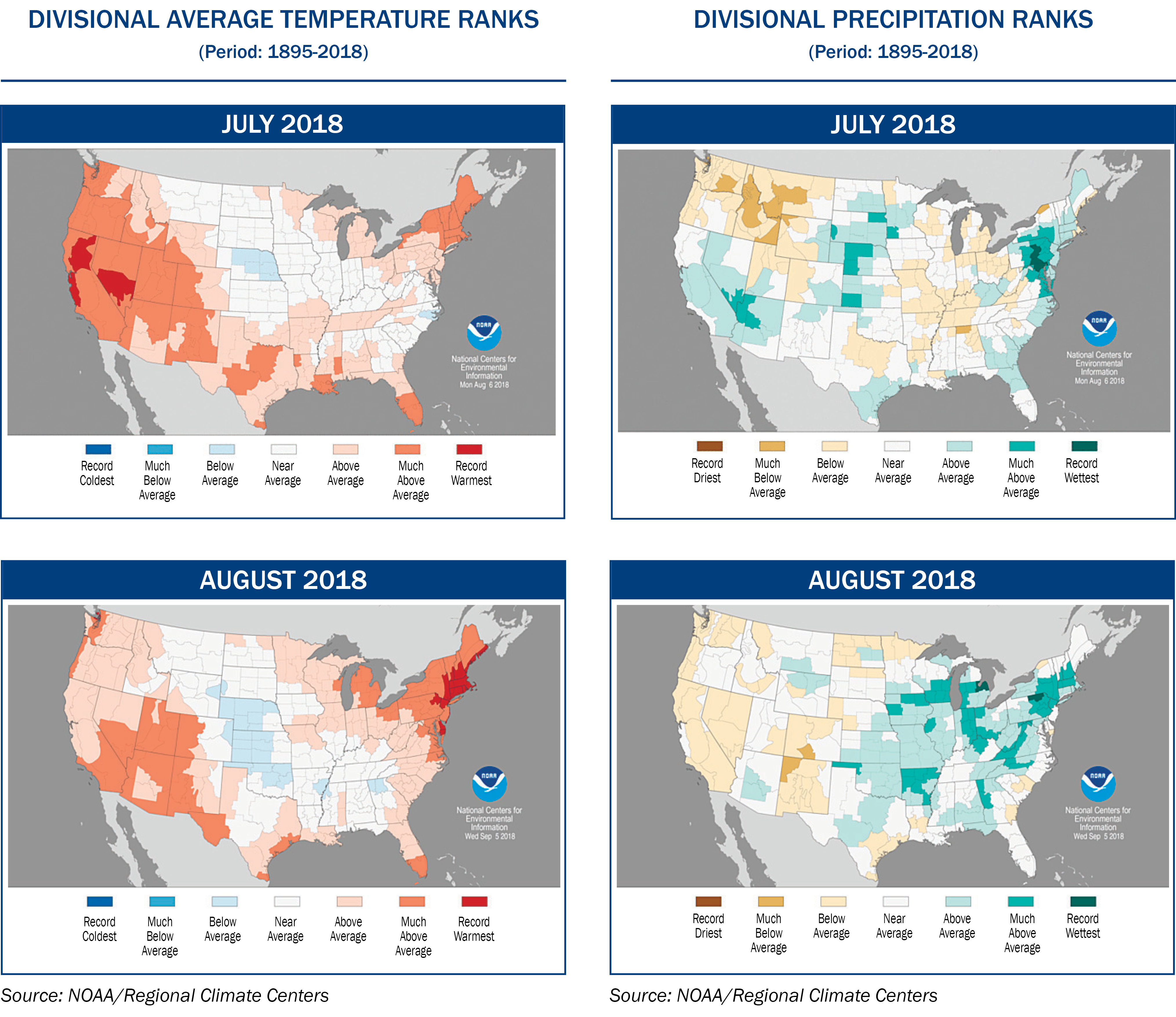B. Pollination and Grain Fill Conditions – Summer (June – August)
Corn pollination typically occurs in July, and at pollination time, greater-than-average temperatures or lack of rain typically reduce the number of kernels. The weather conditions during the early grain-filling period in July and August are critical to determining final grain composition. At pollination, moderate rainfall and cooler-than-average temperatures, especially overnight temperatures, lead to higher starch and oil levels and increased yields. Less rainfall and high temperatures, especially in the second half of grain-fill (August to September), lead to more protein. Nitrogen also remobilizes from the leaves to the grain during late grain-filling, leading to increases in protein content and hard endosperm percentage.

In 2018, the heat experienced during the vegetative period caused pollination to occur two weeks early. Leaf diseases were prevalent in some regions, and heat-stress was offset by rainfall during grain-fill, changing the combined good-to-excellent crop condition rating from between 72% to 78% during early growth to near 68% by the end of the season. The crop quickly matured through grain-fill, with relatively high greater kernel weight and test weight.
In the Pacific Northwest ECA, July and August experienced average to cool temperatures. July was very rainy, too. The later-half of grain-fill was cooler than average with abundant rainfall. These conditions may have contributed to slightly higher starch and slightly lower protein concentrations compared to the previous crop.
While the Gulf ECA was dry during pollination in July, grain-filling in August and September had abundant rainfall that moderated the relatively hot temperatures. The heat accompanied by rain encouraged minor leaf disease pressure, restricting starch accumulation, but promoting greater oil level and test weight.
Overall, the Southern Rail ECA had weather similar to the Pacific Northwest ECA, but cooler and wetter in August and September. Growing conditions in the Southern Rail ECA were good for increasing test weight over the 5YA.
